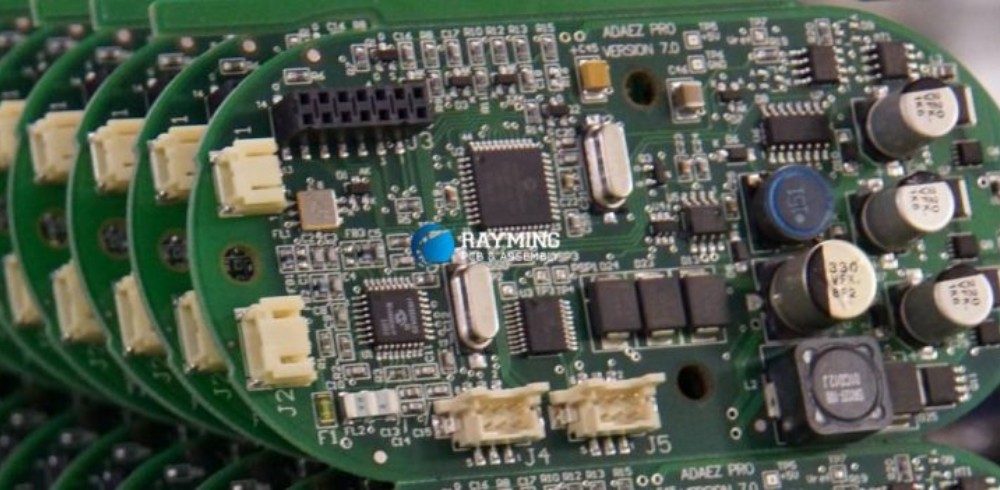Introduction
Electronics manufacturing has become an integral part of many industries today. From consumer electronics to industrial equipment, medical devices to automotive – electronic components and circuit boards are at the heart of most products. This rising demand has led to the growth of electronics manufacturing services (EMS) providers who assemble and test electronic components into finished products. EMS providers offer end-to-end solutions right from design support, sourcing components, soldering, assembly to post-production services. Choosing the right electronics assembly partner is crucial in getting high-quality products delivered on time. This comprehensive guide provides an overview of electronics assembly services, their benefits, how to select the ideal partner and key factors to consider.
What are Electronics Assembly Services?
Electronics assembly refers to the process of mounting, soldering and assembling various electronic components like integrated circuits, resistors, capacitors, diodes, transistors etc. on printed circuit boards (PCB). The populated PCBs then undergo functional testing before being deployed in finished products.
Electronics Manufacturing Services (EMS) providers are companies that specialize in assembling electronic components into PCB assemblies (PCBA) as per the client’s specifications. They procure components, assemble PCBs, test the assemblies and provide related services – thus reducing the workload for OEMs (Original Equipment Manufacturers).
Typical electronics assembly process flow
Source: ResearchGate
Benefits of Using Electronics Assembly Services
- Focus on core competence – By outsourcing assembly activities, OEMs can focus on their core product development and innovation
- Access to advanced manufacturing technologies – EMS providers invest in the latest SMT equipment, inspection systems, testing tools resulting in higher quality
- Skilled resources – EMS companies maintain a qualified workforce trained in electronics manufacturing best practices
- Flexibility & scalability – The production capacity can be quickly scaled based on changing market demand
- Reduce costs – Favorable pricing, bulk component purchase discounts, improved productivity leads to lower costs
- Supply chain efficiencies – EMS providers have established global supply chain networks for procuring components
- Quality and compliance – Most EMS providers are ISO certified and comply with regulations like RoHS
Key Services Offered by Electronics Assembly Companies
Electronics assembly firms offer end-to-end manufacturing services right from the start of product development through post-production support:
1. Design Support
Design for Manufacturing (DFM) and Design for Testability (DFT) help optimize a product design considering assembly factors.
2. Prototype Assembly
Building prototypes quickly during product development using rapid PCB fabrication and assembly.
3. Volume PCB Assembly
Assembling PCBs in medium to high volumes using SMT (surface mount technology) lines.
4. Component Sourcing
Procuring all required components and maintaining stock through franchise distributor networks.
5. Testing and Inspection
Testing assemblies for functionality using in-circuit test equipment. Inspection using automated optical systems.
6. Box Build Assembly
Assembling the PCBA into the final enclosure along with additional hardware.
7. System Integration
Integrating various sub-assemblies, hardware and firmware into the complete system.
8. Fulfillment and Logistics
Managing shipping, inventory and warehousing to deliver finished products globally.
9. Repair and Aftermarket Services
Providing product repair, refurbishment, maintenance and spare part management after deployment.
| Service | Details |
|---|---|
| Design Support | DFM, DFT review to optimize manufacturability |
| Prototype Assembly | Low-medium volume assembly for validation |
| Volume PCB Assembly | Medium to high volume SMT assembly |
| Component Sourcing | Franchised component distribution |
| Testing and Inspection | Functional test, AOI, X-Ray |
| Box Build Assembly | Enclosure assembly with hardware |
| System Integration | Combine H/W, F/W, S/W elements |
| Fulfillment and Logistics | Shipping, inventory management |
| Repair and Aftermarket Services | Repair, refurbishing, spares |
Table: Key services offered by electronics assembly service providers
Factors to Consider When Choosing an EMS Partner

Selecting the right EMS partner involves evaluating various factors:
Technical Expertise and Capabilities
- Years of experience in electronics assembly
- Range of assembly capabilities (SMT, thru-hole, mixed)
- Certifications – ISO9001, ISO13485, IPC, ITAR etc.
- Engineering resources for DFM, test, NPI support
- Manufacturing equipment and technologies used
- Experience with similar products/applications
- Testing, inspection and quality processes
Capacity and Scalability
- Current manufacturing capacity and capabilities
- Ability to scale production up or down flexibly
- Geographic footprint – facilities near target markets
- Component inventory and procurement capacity
Quality and Compliance
- Product quality certifications
- Process capabilities (SPC, lean, Six Sigma etc.)
- Quality benchmarks like PPM rates, DPPM rates
- Compliance with regulatory standards
- Configuration management and change control processes
Reliability and Responsiveness
- On-time delivery metrics
- Capability to handle rapid prototyping and ramp-to-volume
- Supply chain resilience and business continuity plans
- Responsiveness to changing requirements or priorities
Cost Structure
- Pricing model – per component, per placement, other
- Economies of scale with higher volumes
- Inventory management to optimize cost
- Logistics costs based on facility locations
Customer Service
- Communication responsiveness
- Program management and customer portals
- Issue tracking and resolution processes
- Value-added services like consigned inventory
By systematically evaluating partners on these parameters, OEMs can select a trusted long-term electronics assembly partner aligned with their needs and priorities.
Key Questions to Ask Prospective Electronics Assembly Partners

When evaluating potential EMS partners, here are some key questions OEMs should consider asking:
- What manufacturing capacities, technologies and certifications do you possess? Are they a good fit for our products?
- What engineering and NPI services can you provide during early product development?
- How do you ensure quality, consistency and reliability across large production volumes?
- How flexible is your production scheduling and capacity scaling abilities? Can you handle rapid prototypes and ramp to high volumes seamlessly?
- What procurement and inventory management services do you offer for components and PCBs?
- How do you monitor supplier quality and prevent counterfeit components?
- What are your standard lead times? How can we streamline processes to reduce time-to-market?
- Do you have robust IT systems and data security processes, especially for IP protection?
- How do you ensure on-time delivery with a resilient supply chain? What contingency plans do you have?
- What aftermarket, repair and maintenance services can you provide after deployment?
- What are your pricing models? What cost-optimization can you offer for higher volumes?
Getting detailed responses to these strategic questions can help reveal the strengths and capabilities of the EMS provider. Site visits and talking to existing customers also provides valuable insights.
Conclusion
Electronics assembly services empower OEMs to focus on their core competencies and achieve faster time-to-market by leveraging the strengths of EMS providers. Selecting the right partner requires thorough due diligence across parameters like technical capabilities, quality, responsiveness, costs and customer service. This guide summarizes the key considerations for OEMs looking to engage an EMS partner for their electronic product manufacturing and assembly needs. With the right partner, OEMs can gain access to world-class infrastructure, supply chain networks and expertise to manufacture innovative, high-quality and cost-effective products.
Frequently Asked Questions (FAQs)
Q1. What are the benefits of outsourcing electronics assembly?
Some key benefits include:
- Reduction in fixed costs by leveraging specialized infrastructure of EMS providers
- Faster time-to-market with access to advanced manufacturing technologies
- Improved quality as EMS companies have mature processes and quality certifications
- Flexibility to rapidly scale production up or down based on demand
- Risk mitigation by transferring manufacturing activities to specialists
Q2. What production volumes are ideal for outsourced assembly?
EMS providers can handle assemblies from low volumes of few hundreds to very high volumes of millions of boards per year. Mid to high volumes typically above 5000-10000 boards per month provide the optimal economies of scale.
Q3. What regulatory standards do EMS providers comply with?
Most EMS providers comply with stringent industry standards like ISO9001, ISO14001, IPC standards, RoHS directives etc. For medical devices ISO13485 compliance is mandatory. They can also be certified for ITAR, UL, CE marking based on product requirements.
Q4. How are EMS providers managing supply chain disruptions?
EMS providers are using supply chain visibility tools, maintaining higher component inventories and qualifying alternate parts/suppliers. Some also offer inventory consignment services to mitigate shortages for clients. Dual sourcing components and localized sourcing also makes the supply chain more resilient.
Q5. Should OEMs get involved in component selection and procurement?
While EMS providers manage procurement, it helps if OEMs provide approved vendor lists, preferred components, forecast volumes etc. OEM involvement also ensures proper component selection upfront, preventing costly redesigns later.






Leave a Reply